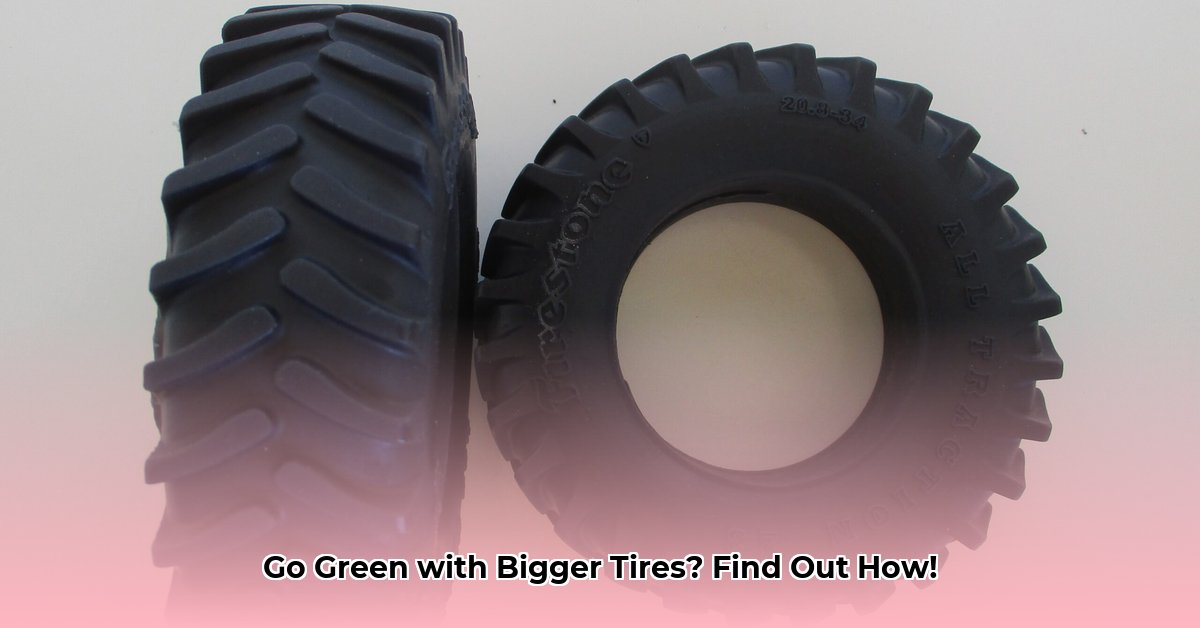
20.8-34 Tractor Tires: A Sustainability Deep Dive
Finding 20.8-34 tractor tires is relatively straightforward. However, a significant knowledge gap exists regarding their environmental impact. This lack of readily available data presents a challenge for sustainable agriculture. This report aims to clarify the current state of the market, highlight the need for improved sustainability data, and provide actionable steps for various stakeholders. For information on other tire sizes, see our research on different tractor tire sizes.
Part 1: Market Overview & Sustainability Gap
The 20.8-34 tractor tire market shows ample availability. However, comprehensive data on their environmental lifecycle is scarce. This lack of information hinders informed decision-making for farmers, manufacturers, and policymakers aiming for sustainable practices. Isn't this a critical hurdle to overcome for environmentally responsible farming? Current research lacks a holistic view of environmental impact. This information deficit affects several areas: energy consumption during manufacturing, raw material sourcing, and end-of-life tire management.
Part 2: Sustainable Practices Guide for Stakeholders
This section offers actionable steps for various stakeholders to enhance the sustainability of 20.8-34 tractor tires.
For Tire Manufacturers:
Conduct Life Cycle Assessments (LCAs): A comprehensive LCA (a detailed analysis of a product's environmental impact throughout its entire life) is crucial. Map every stage, from raw material extraction to disposal, to identify areas for improvement. This detailed analysis allows for the pinpointing of areas with the biggest environmental impact, guiding targeted improvements. The goal is to minimize environmental impact at each step of the process.
Explore Sustainable Materials: Consider bio-based rubber, recycled rubber, and other alternatives to reduce reliance on virgin materials and lessen the environmental burden of raw material extraction and processing. Implementing these alternatives can significantly lower emissions and resource depletion.
Optimize Manufacturing Processes: Focus on energy efficiency, waste reduction, and cleaner production methods throughout the manufacturing chain. Small improvements across all areas can yield significant overall environmental benefits.
For Agricultural Businesses:
Prioritize Performance and Longevity: When purchasing tires, consider factors beyond initial cost. Focus on fuel efficiency, wear rate, and traction to ensure long-term cost savings and reduced environmental impact. This long-term perspective minimizes frequent replacements and associated waste.
Seek Sustainability Certifications: Look for eco-labels and certifications (e.g., those confirming reduced carbon footprint or responsible sourcing) that provide independent verification of sustainability claims. These certifications provide independent validation of manufacturers' sustainability efforts, informing purchasing decisions.
Implement Sustainable Procurement Policies: Integrate sustainability criteria into purchasing decisions to encourage manufacturers to create more environmentally friendly products. This creates market demand that incentivizes better practices.
For Farmers/Consumers:
Critically Evaluate Sustainability Claims: Don't solely rely on marketing claims. Understand the methodologies behind these statements and seek independent verification. Scrutinize the methodologies used to assess environmental impacts.
Engage in Open Communication with Manufacturers: Ask manufacturers about their sustainability initiatives, material sourcing, manufacturing processes, and disposal plans. Transparency is key to fostering accountability. A proactive approach empowers informed purchasing choices.
Practice Proper Tire Maintenance: Proper inflation, rotation, storage, and regular inspection can greatly extend tire lifespan, reducing the need for frequent replacements. This simple maintenance step yields significant environmental benefits.
For Governments/Regulators:
Implement Robust Eco-labeling Programs: Develop clear, science-based standards and labels to facilitate informed consumer choices and reward companies actively engaged in sustainable practices. Simple, clear labeling is essential for effective consumer decision-making.
Develop Incentive Programs: Create financial incentives (e.g., tax breaks, subsidies) for environmentally friendly manufacturing processes and responsible end-of-life tire management. Such incentives drive innovation and adoption of sustainable procedures.
Support Research and Development: Invest in research to improve our understanding of the environmental impact of tire production, use, and disposal. Addressing the existing data gaps is crucial for informed policymaking.
Part 3: Future Directions and Research Needs
More research is needed to fully understand the environmental implications of 20.8-34 tractor tires. Areas requiring further investigation include the life-cycle impacts of different materials and manufacturing processes and comprehensive assessments of the economic and social implications of transitioning to more sustainable options. Collaboration among stakeholders — manufacturers, farmers, researchers, and policymakers — is crucial to drive progress toward more sustainable agricultural practices. The future of sustainable agriculture depends on this collective action. What questions remain unanswered about the long-term consequences of current tire production methods?